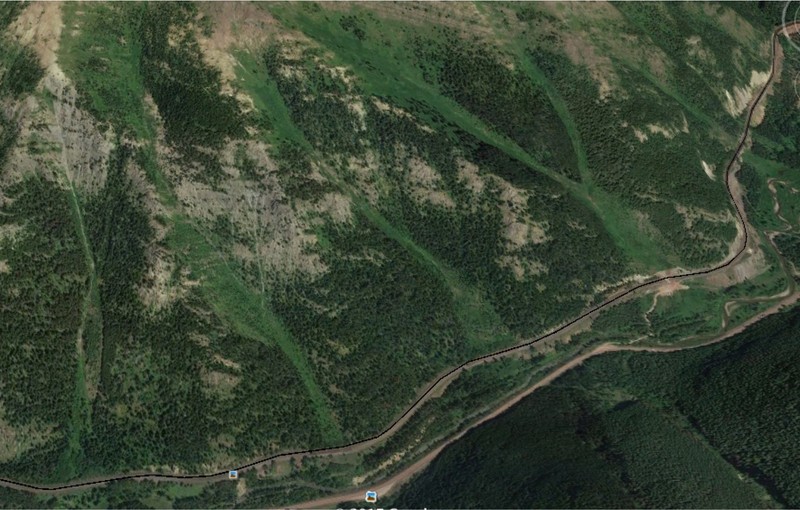Snow Sheds
Introduction
Text-to-speech Audio
Look across the valley at the vertical scar running down the mountain. That is an avalanche chute. When snow builds up at the top in the winter and spring, it can roar down the avalanche chute, tearing away all the vegetation. Each year new trees and bushes sprout up, but the next winter’s avalanche tears them out and the cycle starts over again. We will pass through a series of eight snow sheds. If we could see through the snow shed over our heads, we would see an avalanche chute aimed directly at us. If an avalanche were to come down that chute during the winter or early spring, the snow, rocks and trees would shoot over the top of us into the valley below, thanks to this snow shed. In the accompanying photo, you can see the avalanche chutes that the snow sheds provide protection for on this train route. These snow sheds allow the trains to continue to operate safely during the winter. Many of the timbers used in these snow sheds were salvaged from the snow sheds of the previous route of the Great Northern Railway over Stevens Pass in Washington.
Images

Backstory and Context
Text-to-speech Audio
An avalanche chute is a steep, narrow channel or gully on a mountain slope where avalanches commonly occur. The shape of an avalanche chute typically resembles a V or U-shaped trough. The chutes have been swept clear of trees and brush and appear as a vertical scar on the mountain side. Avalanche chutes are prone to avalanches due to several factors, including the steepness of the terrain, the accumulation of snow, changes in temperature, and the presence of weak layers within the snowpack. When these factors combine, they can trigger a sudden release of snow and ice down the chute, creating a powerful and potentially dangerous avalanche. Avalanches are thought of as destructive, but mother nature has also created them to be beneficial:
• An avalanche chute creates a natural barrier to contain a forest fire;
• They create an open area for animals to roam, graze, and even make their homes;
• They bring new nutrients to the soil as well;
• Vegetation diversity in a slide path creates habitat diversity; and
• Avalanches also can add snow to glacier packs.
Sources
Photo - Google Earth Pro
